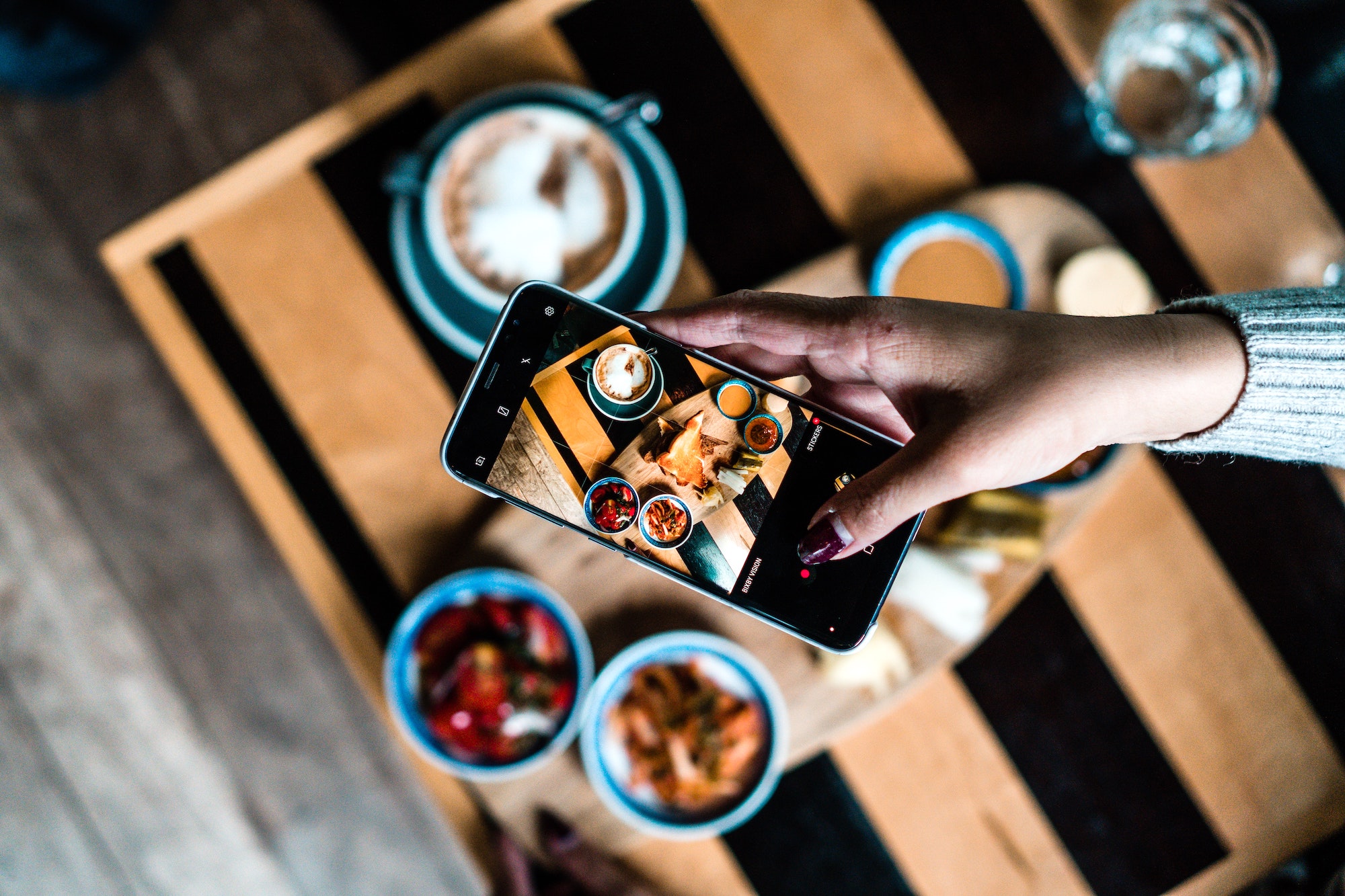Chances are you are more religious about taking photos of and posting your food than saying grace before meals. Then there’s the obsessive exercise in lighting and composition. Never mind that you’re almost always eating your food cold. There’s also the fascination with the unusual and the outrageous, all fueled by the fear of missing out. Cheese pulls, gravy pours, sauce drips, yolk breaking, everything big, bigger, biggest. As of writing, there are 233,948,487 posts on Instagram with the hashtag #food and this number will have increased by the thousands by the time this story comes out. Instagram has definitely changed the way we eat, as many give more importance and immediacy to sharing a meal with their digital followers than with actual people at the dining table.
Patricia Noel of Room For Dessert swears by Instagram being instrumental in the advancement of “food porn.” She feels that there is a sense of “belongingness” whenever people post photos of a trending food item or a meal at a hip new place. On the flipside, she also observes that some people make purchases for social media posting purposes.
Digital culinary worship, if anything, has opened our eyes—and mouths—to the world of food, and refined our palates. We have been quicker to pick up on the trends on the other side of the planet, and have made our obsession with food more apparent.
They don’t actually like or even eat the products themselves. But for the sake of a nice post or the possibility of getting engagement, a number of people are guilty of buying something just to be able to spread word about it online. As for the premium brands have placed on visual appeal, she says some establishments may have even focused on “pretty” at the expense of taste, quality, logic, and daily caloric allowances.
The Bald Baker Cy Ynares sees the socioeconomic leg-up of the free app for home businesses and new entrepreneurs as more cost-effective advertising: sharing. “I was able to maximize my Instagram account and organically shift my online cookie store into a food blog. The additional exposure I get from being a foodie helped me capture new customers that in turn grew my customer base,” he says.
The new algorithm
Virality is a food business’ dream. Noel’s dessert café was introduced to a larger international audience through a video repost of her Fairy Floss Soft Serve by Insider. Garnering millions of views, it led to exposure on several other online platforms. Ynares, on the other hand, not only puts out beautiful photos but augments his content with wild and arguably wildly popular IG Stories.

Post as often as three times a day and, in particular, between 30 minutes to one hour before standard meal times, Certified Google AdSense publisher Gerald and Janice Yuvallos both suggest. Positioning a product in the path of the #hangry—hungry therefore angry, or emotionally vulnerable, at the least—is a no-brainer. Ynares used to post three to five times a day with the chronological order of the feed. The new IG algorithm, however, makes post visibility dependent on the quality of pictures, type of media, and the presence of current followers online.
Table courtesy may have been sacrificed because of it, but people seem to have already forgiven, forgotten, and well, accepted the habit. Just don’t make the mistake of putting food on the floor for a flatlay shot. That’s taking it a bit too far, don’t you think?
“Knowing the basic concepts of people’s online behavior and the ability to take photos that look enticing and genuine are usually all it takes. The owner’s intimate knowledge of their products—and an ability to create short yet impactful captions, then adding relevant #hashtags—go a long way,” says Gerald. Social media managers may be unnecessary for smaller, non-chain operations, but such dedicated expertise for producing content, engaging followers, and growing their online presence should not be discounted.
Ynares plans and plots posts for major announcements or big promos. His daily posts, however, are more on the fly and often related to his actual daily experiences. Noel generally plans at the start of the year for certain periods given sales and outlet performance from the past year, working her calendar around monthly targets and seasonal push products.
Digital culinary worship
Trolls are one thing, and verifiable customer disappointments are another. Noel believes that whether positive or negative, a brand should always acknowledge the consumer’s experience while also being objective with respect to the situation. The Bald Baker diffuses tension with humorous replies and constructive comebacks. Janice had the unfortunate experience of finding worms in her shawarma once. The unapologetic store staff charged her in full; management ignored callouts, both private and later public, online. “We guess the infestation started all the way from the top.” That establishment eventually went on a steep decline.
The world continues to turn, food porn is still in fashion, and people have become more accustomed to the fact that the camera eats first. Digital culinary worship, if anything, has opened our eyes—and mouths—to the world of food, and refined our palates. We have been quicker to pick up on the trends on the other side of the planet, and have made our obsession with food more apparent. Table courtesy may have been sacrificed because of it, but people seem to have already forgiven, forgotten, and well, accepted the habit. Just don’t make the mistake of putting food on the floor for a flatlay shot. That’s taking it a bit too far, don’t you think?
Originally published in F&B Report Vol. 14 No. 5





